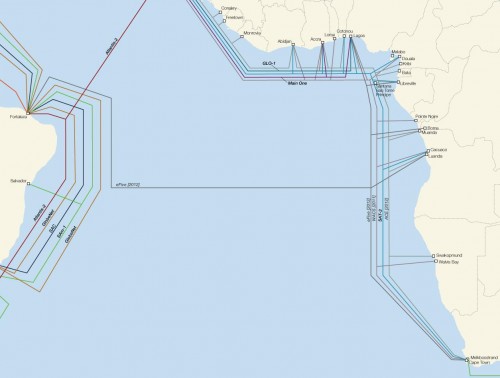
Note also the route of Tal Shaffner's proposed northern cable.ĭetail of North Atlantic section of aboveġ865: Chart of the World Showing the Proposedġ869: Map of the Atlantic Telegraph Communications between France, England & AmericaĬ. Geography of the Sea (1869 edition), showing the routes of the 1858 Atlantic Cable and the proposed 1869 French Map of the Telegraph Plateau, from Maury's Physical 12 Frankfort St., N.Y." (datedġ857 and copyright Korff Brothers). Practical Lithographers, 54 William Street, New York" Map of the 1858 Atlantic Cable route fromĪnother map of the 1858 Atlantic Cable route.Īlthough no publisher is shown on this map, other copies are marked: Is about 72 times greater than the longitudinal scale.) (The Vertical scale, showing depths of soundings, (on line C.D of chart above) showing Soundings Vertical section of the bed of the Atlantic Ocean,įrom Valencia, Ireland, to Trinity Bay, Newfoundland,

The TeleGeography site also has other submarine cable maps.Įach image below links to a larger copy of the map TeleGeography now has an antique-style interactive map of present-day working cables. Later maps were issued as promotional itemsīy cable companies and government telecommunications authorities.įor modern cables, Greg Mahlknecht has an excellent interactive map showing routes and details for each system. History of the Atlantic Cable & Undersea Communicationsįrom the first submarine cable of 1850 to the worldwide fiber optic networkĮarly cable route maps were often published To conclude, Mariano shared with the audience several global submarine cable maps ( and ), as well as a map one showing the submarine cables for the region of Latin America and the Caribbean ( ).History of the Atlantic Cable & Submarine Telegraphy - Submarine Cable He then noted that, for example, satellite technology has a lifespan of five years, while cable technology can last for 25 years and photon speed increases the speed of cable transmissions. He added that there are major differences between the speed of connections using submarine cables and satellite connections and that satellite engineering is different from undersea cable engineering. Multiple factors are involved,” he explained. “The right to lay a cable over one location or another, its potential environmental impact, exclusive economic areas, fisheries, areas with greater levels of activity, coast guard operations, permits, municipal and local authorities.


Regulations and geopolitical issues are also complex aspects of submarine cables. “What will the cable connect? Which countries? Which populations? What is the Internet penetration rate in those countries? Will there be any return on the investment? And what about the timeline? How long will it be before the cable is operational? The value of a communications network is proportional to the number of users who access the system,” the expert added. Meanwhile, the investment required for laying an intercontinental cable is approximately a billion dollars.Ī number of geopolitical factors and interconnection and financial analyses must be considered for installing a cable. In his presentation, Mariano observed that approximately 100,000 new kilometers of cable are being laid each year and that these cables have a twenty-five-year lifespan. “The world is connected across the oceans,” Mariano said.Twenty five years ago, in 1995, 50% of Internet traffic used submarine cables while the other 50% connected via satellite. He observed that 99% of the world is currently connected to the Internet through submarine cables and that only 1% is connected via satellite. In his presentation titled “Jules Verne and the 20,000 Leagues of Subsea Cables: A True Tale About Submarine Cables,” Mariano noted that submarine cables are “one of the wonders of engineering.”

Submarine cables play an important role in global Internet infrastructure and there are currently around 406 operational submarine cable systems worldwide, Rogerio Mariano, Director of Network Edge Strategy at Azion Technologies, shared with participants at LACNIC 34 – LACNOG 2020. “The World Connects to the Internet Over Subsea Cables”


 0 kommentar(er)
0 kommentar(er)
